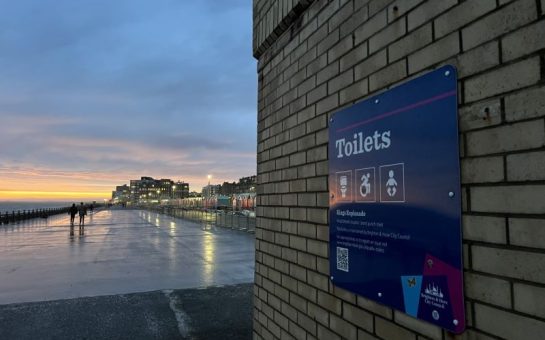Ali Bruce
April 15 2020, 13.00
Follow @SW_Londoner
A razor-wire fence severed down its middle represents one of two things depending on which side one stands.
To one side, the gap is the hope of greater opportunity and an escape from a country devoid of opportunity and healthcare. To the other, the fence symbolises a new barrier for people to send food home.
This 1.8m high fence is the newly-erected 40km mesh of statement that is part of the border between South Africa and Zimbabwe at Beitbridge.
It was erected under the direction of Patricia de Lille, South Africa’s Minister of Public Works and Infrastructure, to halt the cross-border spread of coronavirus.
South Africa’s lockdown began on March 23, prohibiting all but absolutely essential shopping. Lockdown measures and stricter border controls intended to restrict the flow of people are making it harder for Zimbabweans working in South Africa to send supplies home to their families.
“Groceries are so expensive that side [in Zimbabwe], it makes life difficult for me as I have to send cash for my mom now and then so they can take care of themselves”, said Princess Sibanda, a Zimbabwean domestic worker working in Johannesburg.
“It was much better when I was sending groceries but now because of this situation all the borders are closed so it’s really a challenge for me.”
Despite the clamped down borders, it was discovered that over the Easter weekend the new fence had been criminally damaged by border hoppers on the hunt for better lives.
Illegal and undocumented border crossings from Zimbabwe into South Africa are not new. It is unclear whether Covid-19 has increased numbers illegally crossing the border, but it does show that the pandemic has not meant a cessation of the search for greener pastures.
The people of Zimbabwe face acute difficulties in the face of Covid-19, even compared to their neighbour’s own problems with sheer numbers tightly packed into Johannesburg’s townships – a potential hotspot for infection.
Zimbabwe’s own situation has gradually worsened since its former leader Robert Mugabe’s forced resignation in November 2017. “Out of the frying pan and into the fire,” said a Zimbabwean Uber driver in Johannesburg. Into Mugabe’s place moved “The Ngwenya”, or “crocodile” in Shona, Emmerson Mnangagwa, who has not improved the situation.
Zimbabweans are facing challenges from all sides: economic meltdown, poor healthcare, food shortages and now coronavirus.
Medical professionals warned of a pressing shortage of personal protective equipment, ventilators, and oxygen tanks, even after Zimbabwean billionaire Strive Masiyiwa donated 45 ventilators to Zimbabwe. In January, Mr Masiyiwa also ended a four-month doctors’ strike by offering to set up a £4.8m fund to pay subsistence wages for up to 2000 doctors. The healthcare system was crippled during this strike.
The Sunday Times chief foreign correspondent Christina Lamb said of her visit in August: “Last time I was there it was grim, no running water, endless powercuts, no basic medicines even in Harare’s biggest hospital which years ago used to be a model for the continent, now people are having to pay before they could get any treatment.”
The conditions in Zimbabwe have caused an influx of Zimbabweans into South Africa, and the global pandemic of coronavirus and lockdown has not been enough to keep people from migrating. But it has stopped those working abroad from sending their families food.
Official data are incomplete due to the nature of illegal migration, but estimates vary between claiming one to two million Zimbabweans live in South Africa. With Zimbabwe’s current crisis, it seems this number will continue to grow.




